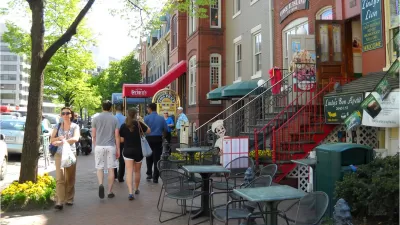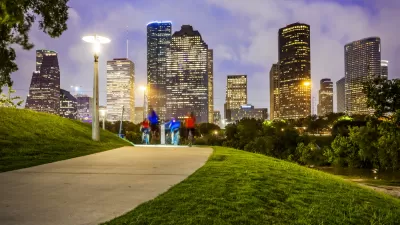Though many retirement communities still look just as they have for many decades—defined by cul-de-sacs and golf courses—many seniors are looking for a more urban lifestyle.

"In the age of the Fitbit and a growing cohort of active, engaged retirees eager to take their daily 10,000 steps, retirement communities have been slow to change," according to an article by John W. Wasik.
Despite 80 percent of retirees still living in car-dependent suburbs and rural areas, a new paradigm is emerging for retirement lifestyles: walkable, urban space. According to Wasik, a walkable, urban space "may range from existing neighborhoods in places like Brooklyn or San Francisco to newly built housing within city and suburban cores from coast to coast."
"Walkability, though, is much more than a hip marketing pitch. It’s linked to better health, social engagement and higher property values," according to Waski.
The article cites the expertise of Christopher Leinberger, who has been a leading researcher on the topic of walkable urban places, including the "Foot Traffic Ahead 2016" report, which finds growing demand for the development pattern
There are many obstacles to the creation or preservation of walkable urban places, especially as designed to cater to seniors and retirees. "Age-friendly communities within cities may require extensive infrastructure improvements, including wider sidewalks, bike lanes, more public transportation options and longer pedestrian signal walk times," reports Waski.
FULL STORY: The Future of Retirement Communities: Walkable and Urban

Study: Maui’s Plan to Convert Vacation Rentals to Long-Term Housing Could Cause Nearly $1 Billion Economic Loss
The plan would reduce visitor accommodation by 25,% resulting in 1,900 jobs lost.

Alabama: Trump Terminates Settlements for Black Communities Harmed By Raw Sewage
Trump deemed the landmark civil rights agreement “illegal DEI and environmental justice policy.”

Why Should We Subsidize Public Transportation?
Many public transit agencies face financial stress due to rising costs, declining fare revenue, and declining subsidies. Transit advocates must provide a strong business case for increasing public transit funding.

Paris Bike Boom Leads to Steep Drop in Air Pollution
The French city’s air quality has improved dramatically in the past 20 years, coinciding with a growth in cycling.

Why Housing Costs More to Build in California Than in Texas
Hard costs like labor and materials combined with ‘soft’ costs such as permitting make building in the San Francisco Bay Area almost three times as costly as in Texas cities.

San Diego County Sees a Rise in Urban Coyotes
San Diego County experiences a rise in urban coyotes, as sightings become prevalent throughout its urban neighbourhoods and surrounding areas.
Urban Design for Planners 1: Software Tools
This six-course series explores essential urban design concepts using open source software and equips planners with the tools they need to participate fully in the urban design process.
Planning for Universal Design
Learn the tools for implementing Universal Design in planning regulations.
Smith Gee Studio
Alamo Area Metropolitan Planning Organization
City of Santa Clarita
Institute for Housing and Urban Development Studies (IHS)
City of Grandview
Harvard GSD Executive Education
Toledo-Lucas County Plan Commissions
Salt Lake City
NYU Wagner Graduate School of Public Service





























